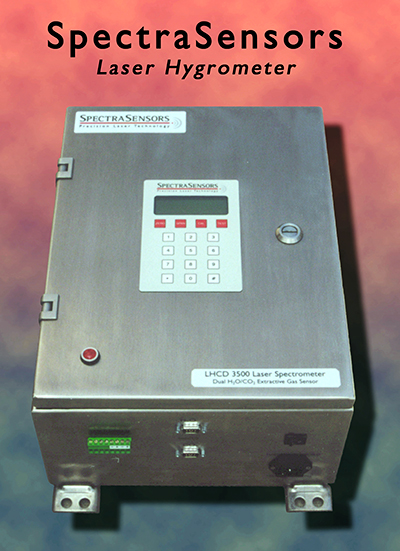A Little Sensor That Packs a Wallop
SpectraSensors, Inc., a spinoff company of NASA's Jet Propulsion Laboratory (JPL) has commercialized a gas sensor that was originally developed to measure the composition of the atmospheres of Earth and Mars. The company acquired exclusive patent rights from the California Institute of Technology, where JPL is managed and located. NASA and the Department of Defense's Ballistic Missile Defense Organization (BMDO) funded the development of the technology at JPL. The BMDO required the lasers for high-speed optical communications. NASA required the technology for atmospheric gas-sensing applications, using the tunable diode laser (TDL) gas sensor on aircraft and on balloons to study weather and climate, global warming, and emissions from aircraft.
SpectraSensors, Inc., is an Altadena, California-based TDL gas sensor systems developer and manufacturer. The company's commercial TDL gas sensors have applications for oil and gas pipeline monitoring, industrial process control, smokestack monitoring, environmental monitoring, atmospheric science, aircraft safety, and medicine. The company's technology is capable of detecting several gasses that are critical to industrial process control and environmental monitoring. Such detection includes water vapor, ammonia, acetylene, carbon dioxide, hydrogen fluoride, and hydrogen chloride.
The heart of TDL systems is a small laser diode that produces a very narrow and specific wavelength of light tuned to a harmonic frequency of the target gas molecule in the near infrared band. The light causes the molecule to vibrate and, therefore, absorb energy. Once adjusted to the specific frequency of the molecule, the laser is minutely tuned to different wavelengths on either side of the target wavelength. The light energy being absorbed at the target gas frequency is compared to the light energy at the surrounding frequencies, resulting in an extremely precise measurement. New data are integrated every second, making the system quick to respond to variations in the target gas.
Natural gas distributors are currently using the company's extraction monitors to quantify levels of water vapor and carbon dioxide in their natural gas pipelines. The application calls for a rugged device, which can withstand the harsh environments in these pipes and measure moisture levels in methane pipes with low parts-per-million sensitivity. Today, many suppliers transport their product to many customers through a shared pipeline infrastructure. Market rates for gas products are determined, in part, by the moisture level and purity of natural gas. Relative moisture levels indicate whether a gas is "wet" or "dry," while carbon dioxide levels tell the distributor whether the product is "clean" or "dirty." The requirement to measure humidity is also driven by the corrosive effect that water can have in combinations with other chemicals in the pipes. Corrosion can lead to leaks, which can lead to a potentially dangerous situation.
TDL gas-sensing technology is particularly good at detecting low levels of gases at the parts-per-million or even parts-per-billion level. With many industrial processes involving gas measurement of some kind, commercial applications for this technique are very wide ranging. From detecting moisture and carbon dioxide levels in natural gas pipelines to wafer-fabrication process control for the semiconductor industry, TDLs will be making news in the industrial and environmental monitoring sectors for years to come.

SpectraSensors, Inc.'s Tunable Diode Laser is capable of detecting several gases that are critical to industrial process control and environmental monitoring.













